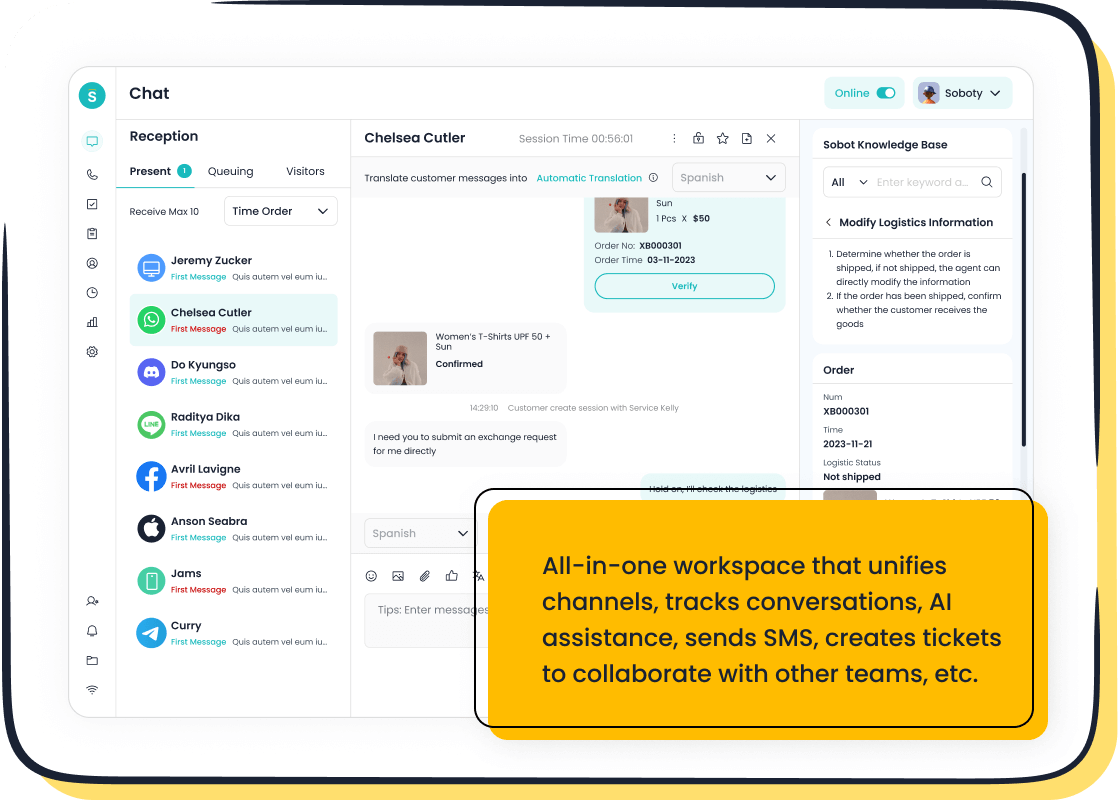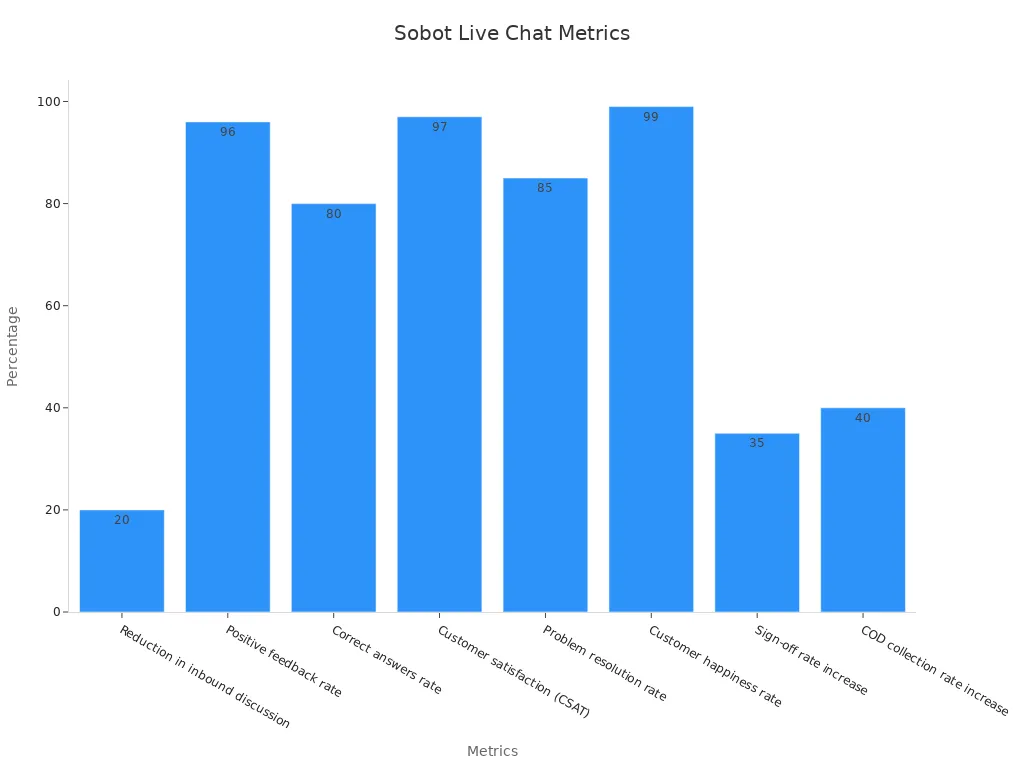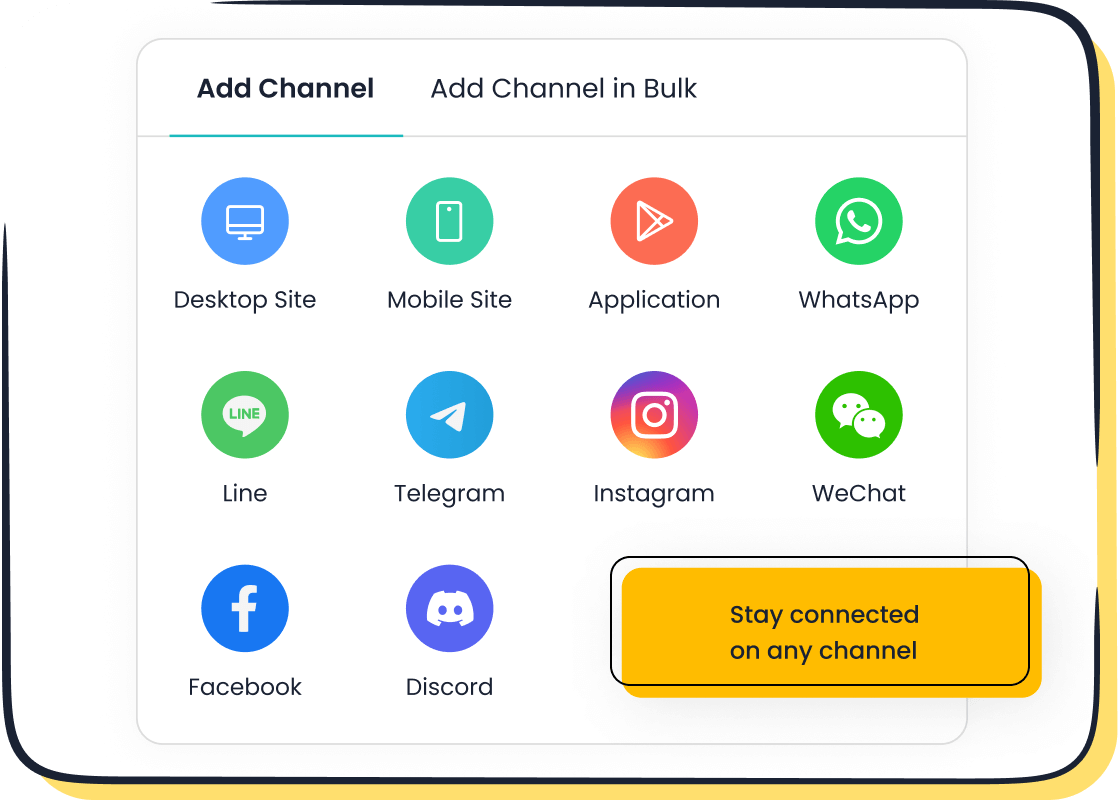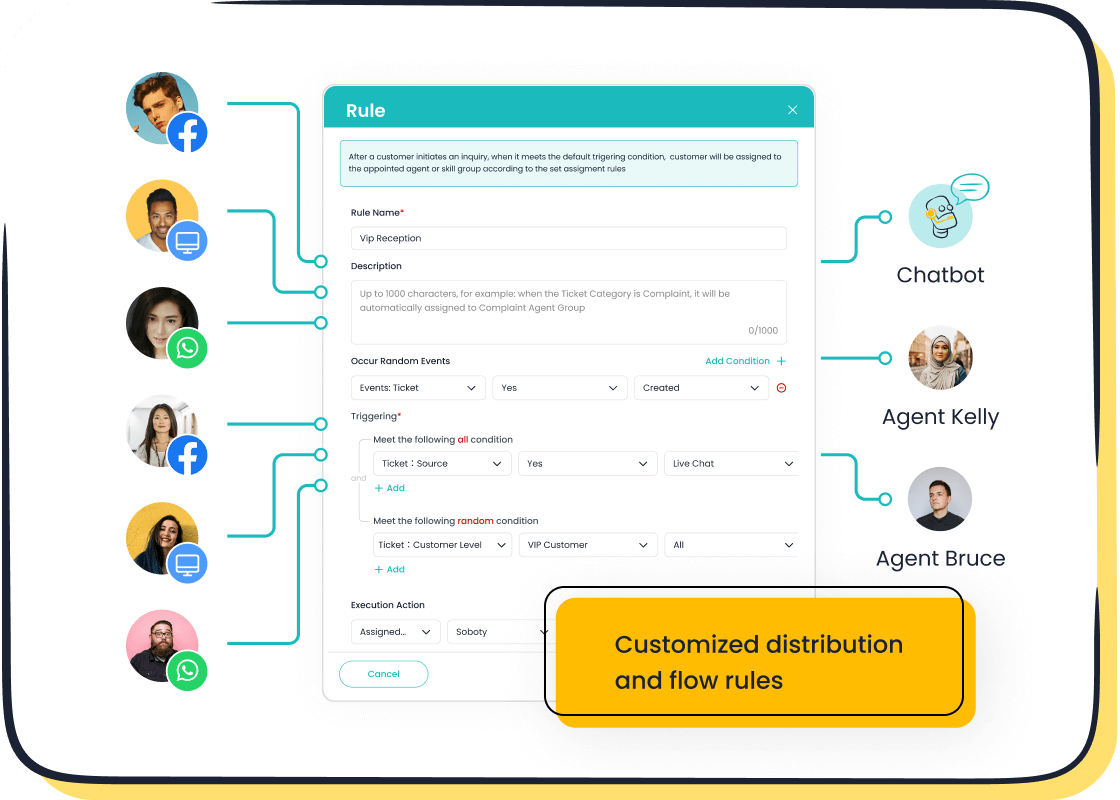Turn Angry Customers into Fans with These Tips

Handling social media comments from angry customers can feel overwhelming, but it’s actually a golden opportunity. When you respond effectively, you’re not just calming the storm—you’re building trust and safeguarding your brand reputation. Did you know that 83% of customers feel more loyal to brands that resolve their complaints? On the flip side, poor responses can lead to negative reactions, such as unfollows or boycotts, which are prime examples of bad customer service on social media. A thoughtful approach can turn frustration into loyalty, showing customers that your business cares. Companies like Sobot make this process smoother by offering tools to manage online interactions efficiently.
Acknowledge the Complaint

Why acknowledgment is the first step to resolution
When a customer complains, the first thing they want is to feel heard. Acknowledging the complaint shows them you’re paying attention and taking their concerns seriously. Research reveals that a sincere apology often leads to higher satisfaction than financial compensation. It’s not just about saying sorry—it’s about showing you understand their frustration and are ready to help.
Take the Child Growth Foundation’s approach as an example. They emphasize acknowledging complaints within five working days, letting customers know who’s handling their issue and when they’ll get a response. This simple step builds trust and sets the stage for a smooth resolution.
How to acknowledge complaints professionally
Handling customer complaints requires you to be professional and empathetic. Start by responding quickly—timeliness matters. Use clear and personalized language, addressing the customer by name and referencing their specific issue. Show empathy by validating their feelings and expressing genuine concern.
Here are some strategies to keep in mind:
- Use action-oriented language to assure the customer you’re working on a solution.
- Train your team in active listening and empathy to improve customer care.

By combining empathy with professionalism, you can turn complaints into opportunities to strengthen relationships.
Examples of empathetic acknowledgment phrases
Empathy is your secret weapon when handling complaints. It helps de-escalate tension and builds trust. Here are some phrases you can use:
- "I can see why you'd be frustrated."
- "That sounds really tough, let's work on a solution."
- "I would feel the same way in your situation."
- "Thank you for bringing this to our attention."
- "I'm really sorry you're experiencing this, but I'm glad you told us."
These statements show customers you care and are committed to resolving their issues. When you acknowledge the complaint with empathy, you pave the way for a positive outcome.
Respond Quickly and Publicly
The importance of timeliness in social media responses
When customers leave social media comments, they expect quick replies. Nearly 75% of consumers want a response within 24 hours or less. If you don’t respond to comments promptly, 73% of users might turn to your competitors. Timely responses show that you value your customers and their concerns. This can even lead to increased sales, as noted by Yuvi Alpert, who observed dramatic growth in brands that prioritize speed.
Responding quickly also helps protect your brand reputation. Social media is public, and delays can harm how others perceive your business. By addressing issues swiftly, you show that your brand is proactive and customer-focused.
How public responses build transparency and trust
Public responses to social media comments demonstrate transparency. When you acknowledge issues openly, it reassures customers that you have nothing to hide. This builds trust and strengthens your relationship with your audience.
For example, monitoring customer sentiment through reviews and mentions can help you gauge how your transparency efforts are perceived. Positive feedback often translates into repeat purchases and stronger brand loyalty. Even media coverage can reflect how well your brand handles public interactions.
Using Sobot Live Chat for real-time responses

Sobot Live Chat is a game-changer for responding to comments in real time. It supports multiple channels like WhatsApp, Facebook, and Instagram, ensuring you never miss a message. With features like AI-assisted tools and built-in analytics, it helps you respond faster and more efficiently.
Here’s how Sobot Live Chat performs:

Metrics like a 97% customer satisfaction rate and an 85% problem resolution rate highlight its effectiveness. By using tools like this, you can enhance your response time and keep your customers happy.
Take the Conversation Offline
Why private resolution is often necessary
Sometimes, resolving issues publicly on social media isn’t the best approach. Sensitive topics, like billing errors or personal data concerns, require privacy. Moving these conversations offline protects your customers’ information and shows you value their trust. It also prevents misunderstandings from escalating in a public forum.
Take Citigroup’s example. Their @AskCiti Twitter account encourages customers to shift sensitive discussions to secure channels. They even remind users not to share private details, even in direct messages. This proactive approach ensures privacy while maintaining professionalism.
When you handle customer complaints privately, you create a safe space for resolution. It’s not about hiding the problem—it’s about solving it in the most effective way possible.
Steps to transition from public to private communication
Shifting a conversation from public to private doesn’t have to be tricky. Start by acknowledging the issue publicly. A quick response builds credibility and reassures others that you’re addressing the problem. Then, guide the customer to a private channel, like direct messaging or email, for further discussion.
Here’s a simple process to follow:
- Respond promptly to social media comments to show you’re listening.
- Use automated replies for common issues, but personalize follow-ups when needed.
- Maintain the conversation’s context when transitioning to private channels.
- Once resolved, return to the public thread with a brief update to close the loop.
This approach keeps things transparent while ensuring sensitive details stay private.
Maintaining public goodwill while resolving issues privately
Even when you take a conversation offline, it’s important to maintain goodwill with your audience. Transparency is key. Let others know you’re working on a solution without oversharing.
As one expert put it, “If you succeed in creating a description of the problem and the solution at the same time, then you have come a long way.” By framing your response positively, you can turn a potential PR issue into an opportunity to showcase your brand’s commitment to customer care.
When you handle customer complaints this way, you not only resolve the issue but also strengthen your reputation. People appreciate brands that are both proactive and respectful of their customers’ privacy.
Offer a Solution or Compensation

How to identify meaningful resolutions
When customers voice complaints through social media comments, they’re looking for more than just a quick fix. They want a solution that feels personal and addresses their specific concerns. To identify meaningful resolutions, focus on understanding the root cause of the issue. Metrics like Average Handling Time (AHT) and Resolution Rates can help you measure how effectively you’re solving problems.
| Metric | Description |
|---|---|
| Average Handling Time (AHT) | Tracks the time spent resolving complaints, including callbacks and follow-ups. |
| Resolution Rates | Measures the percentage of complaints resolved within a set timeframe. |

Using tools like Sobot Live Chat can streamline this process. Its AI-powered features help you gather insights from customer feedback, making it easier to tailor solutions. Remember, no two customers are the same. A McKinsey report found that 71% of customers expect personalized experiences, so taking the time to craft a tailored response can turn a negative experience into a positive one.
When and how to offer compensation
Sometimes, an apology isn’t enough. Offering compensation, like discounts or freebies, can show customers you value their loyalty. But timing is everything. If you wait too long, the damage might already be done. Brands that respond quickly—ideally within an hour—see higher customer satisfaction rates.
Compensation doesn’t have to be extravagant. A small gesture, like a coupon or free shipping, can go a long way. For example, if a customer complains about a delayed order, you could offer a discount on their next purchase. This not only resolves the issue but also encourages repeat business. Sobot’s omnichannel tools make it easy to track customer interactions, ensuring you don’t miss opportunities to offer timely compensation.
Examples of bad customer service on social media to avoid
Not all responses are created equal. Some can actually make things worse. Ignoring or deleting customer complaints is a surefire way to lose trust. Responding with generic apologies, like “We’re sorry for the inconvenience,” can come across as insincere. Customers want to feel heard, not brushed off.
Another common mistake is failing to address the root cause of complaints. Simply offering a refund without fixing the underlying issue won’t win back loyalty. And being defensive or argumentative? That’s a recipe for disaster. Instead, focus on empathy and transparency. Show your audience that you’re committed to improving your customer care.
By avoiding these pitfalls, you can turn even the most frustrated customers into loyal advocates. Tools like Sobot Live Chat help you manage social media comments effectively, ensuring every interaction leaves a positive impression.
Follow Up
Why follow-up is crucial for customer satisfaction
Following up after the complaint shows customers you genuinely care about their experience. It’s not just about solving the issue but ensuring they feel valued. When you follow up, you reinforce trust and demonstrate that their feedback matters. This simple step can make a big difference in how customers perceive your brand.
Here’s why follow-ups matter:
- They confirm the issue has been resolved to the customer’s satisfaction.
- They show your commitment to customer care and continuous improvement.
- They help prevent future complaints by addressing lingering concerns.
Proactive follow-ups also set your business apart. Customers appreciate brands that go the extra mile to check in, and this effort can significantly boost loyalty.
How to ensure the issue is fully resolved
To handle customer complaints effectively, you need a clear follow-up process. Start by recapping the resolution in an email or message. This ensures the customer knows what actions were taken. Include helpful resources or FAQs to address any related concerns. Invite them to reply or reach out if they have further questions.
Here’s a simple framework to verify resolution:
- Acknowledge the issue and confirm it’s been addressed.
- Provide a summary of the solution and any next steps.
- Ask for feedback to ensure the customer is satisfied.
You can also analyze feedback for trends. This helps identify areas for improvement and ensures your team continues to deliver excellent service.
Building long-term relationships through follow-up
Follow-ups aren’t just about resolving issues—they’re about building lasting relationships. When you check in with customers, you show them they’re more than just a transaction. This can lead to higher retention rates and stronger loyalty.
Metrics like Net Promoter Score (NPS) and Customer Lifetime Value (CLV) highlight the impact of effective follow-ups. A high NPS means customers are likely to recommend your brand, while a strong CLV shows they’re sticking around for the long haul.
Want to take it a step further? Offer loyalty programs or use conversational AI to keep the dialogue going. These strategies make customers feel appreciated and encourage them to engage with your brand regularly. By following up thoughtfully, you turn one-time buyers into lifelong fans.
Learn from Feedback
Using complaints to identify business weaknesses
Customer complaints are like a mirror—they reflect areas where your business can improve. Many unhappy customers don’t even voice their concerns. In fact, only 1 in 25 will complain directly to you, while others may simply leave. This makes every complaint you receive a valuable insight into potential weaknesses. For example, recurring issues in social media comments might point to flaws in your product, service, or processes.

Addressing these complaints quickly can turn things around. Studies show that customers whose issues are resolved in under five minutes are more likely to stay loyal. By listening to complaints, you can uncover hidden problems and fix them before they escalate. Tools like Sobot AI help you track and analyze feedback across channels, ensuring no issue goes unnoticed.
How to implement changes based on customer feedback
Turning feedback into action starts with collecting it from multiple sources, including social media comments. Use an omnichannel approach to get a complete picture of customer sentiment. Social listening tools and sentiment analysis can help you identify trends and prioritize issues.
Once you’ve gathered feedback, focus on actionable steps. For example, if customers frequently mention slow response times, consider using Sobot Live Chat to speed up interactions. Its AI-powered tools can automate responses and improve efficiency. Regularly review performance metrics like resolution rates to ensure your changes are making a difference.
Turning feedback into opportunities for growth with Sobot AI
Feedback isn’t just about fixing problems—it’s a goldmine for growth. Sobot AI helps you turn insights into opportunities. Businesses using Sobot’s solutions have seen a 38% increase in conversion rates and a 57% rise in repurchase rates. By aligning your products and services with customer needs, you can foster loyalty and drive innovation.
For example, Sobot AI’s sentiment analysis can reveal what customers love about your brand and where you can improve. This allows you to refine your offerings and stay ahead of market demands. When you act on feedback, you show customers that their opinions matter, building trust and long-term relationships.
Addressing social media comments effectively isn’t just about solving problems—it’s about building customer loyalty and trust. When you acknowledge complaints, respond quickly, and take conversations offline, you show customers they matter. Offering solutions, following up, and learning from feedback turn a negative experience into a positive one.
Engaging with your audience on social media humanizes your brand. Did you know 62% of millennials are more likely to stay loyal if you interact with them online? By listening, acting, and improving, you create lasting relationships. These steps don’t just resolve issues—they strengthen your business and foster a loyal community.
FAQ
How can I respond faster to customer complaints on social media?
Use tools like Sobot Live Chat. It centralizes messages from all platforms, enabling quick replies. AI-assisted features also help you craft responses efficiently. 🚀
What’s the best way to handle sensitive issues publicly?
Acknowledge the issue briefly, then guide the customer to private channels like direct messaging or email. Transparency builds trust while protecting privacy.
Can Sobot help improve customer satisfaction?
Absolutely! Sobot’s AI tools streamline responses, track feedback, and offer insights. Businesses using Sobot have seen satisfaction rates soar by up to 90%. 🌟
See Also
10 Strategies To Enhance Customer Satisfaction Through Live Chat
10 Guidelines For Selecting Social Media Customer Support Tools
Effective Management Techniques For Live Chat Support Agents
How AI Customer Service Agents Transform Support Experiences